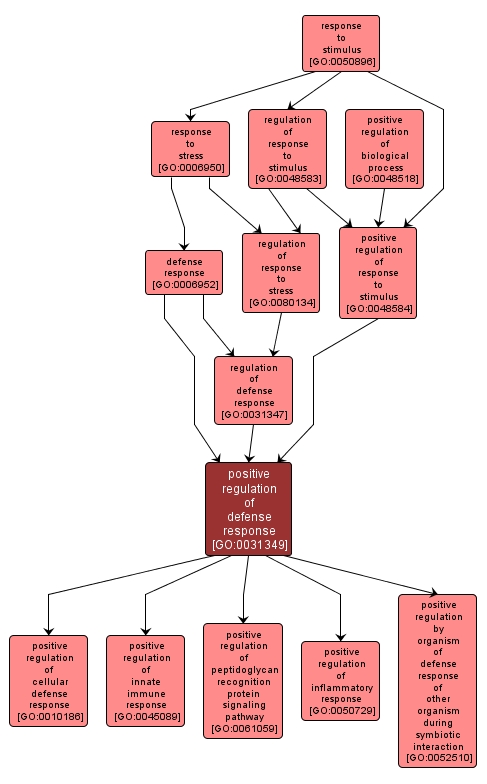GO TERM SUMMARY
|
| Name: |
positive regulation of defense response |
| Acc: |
GO:0031349 |
| Aspect: |
Biological Process |
| Desc: |
Any process that activates or increases the frequency, rate or extent of a defense response. |
Synonyms:
- stimulation of defense response
- up-regulation of defense response
- activation of defense response
- up regulation of defense response
- upregulation of defense response
|
|

|
INTERACTIVE GO GRAPH
|














